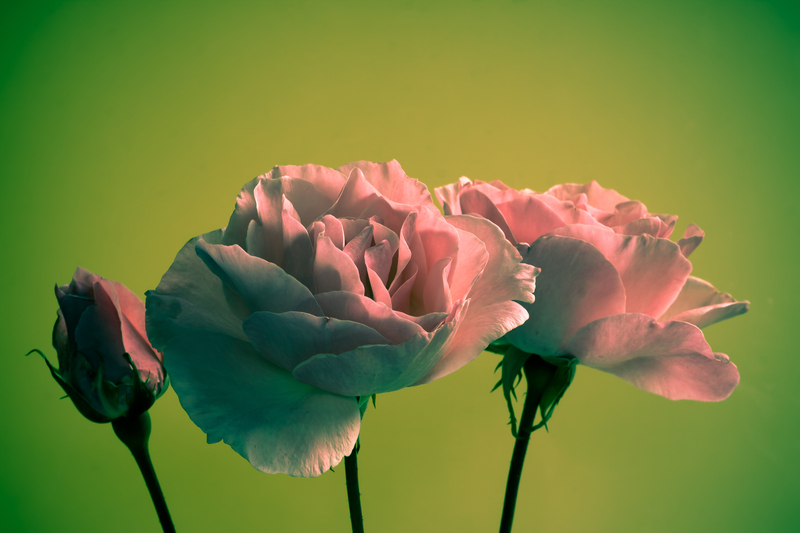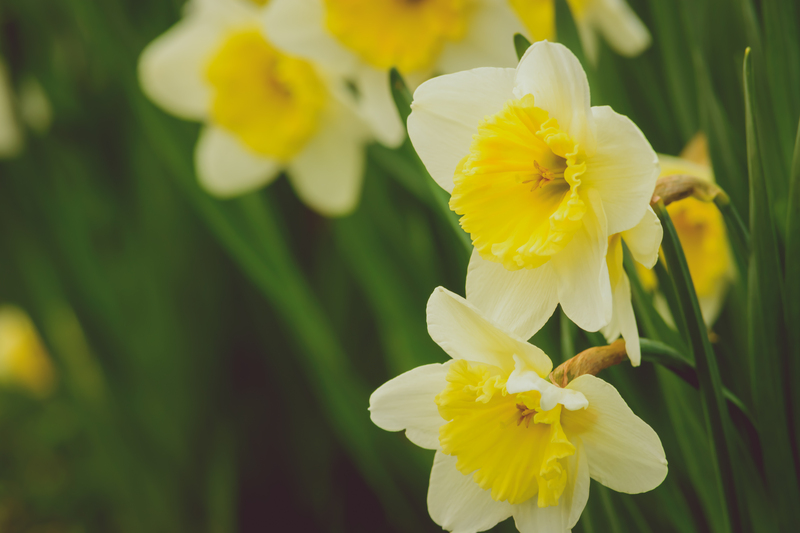Container Gardening: A Practical Guide
Posted on 30/06/2025
Container Gardening: A Practical Guide
Container gardening has gained immense popularity among garden enthusiasts and beginners alike. Whether you have a sprawling backyard or a tiny balcony, growing plants in containers is a versatile and rewarding approach to adding green spaces to your home. This comprehensive guide is designed to offer practical tips, insightful techniques, and inspiration for anyone embarking on their container gardening journey.
What is Container Gardening?
Container gardening refers to the practice of growing plants exclusively in containers instead of planting them in the ground. These containers can range from traditional clay pots and ceramic planters to repurposed buckets, baskets, or troughs. With the right preparation, nearly any plant--including flowers, vegetables, herbs, and even small trees--can thrive in a pot.
Benefits of Container Gardening
- Space efficiency: Ideal for urban settings, small patios, balconies, or rooftops.
- Flexibility: Rearrange your garden at will and move plants to follow the sun.
- Pest and disease control: Isolate problematic plants and prevent the spread of pests.
- Accessibility: Perfect for individuals with mobility issues or those who prefer not to kneel or bend.
- Seasonal variety: Easily switch out plants to reflect seasonal changes.

Choosing the Right Containers for Your Garden
The success of your container gardening project starts with selecting suitable pots for your plants. While design is important, material and size critically influence the health and growth of your plants.
Container Materials: Pros and Cons
- Clay/Terracotta: Classic appearance, allows soil to breathe, but can dry out quickly and may crack in winter.
- Plastic: Lightweight, affordable, retains moisture well, but may degrade in harsh sunlight.
- Ceramic/Glazed: Decorative, holds moisture better, but heavy and can be expensive.
- Metal: Trendy and durable, but can heat up quickly and damage roots.
- Wood: Natural look and good insulation, but can rot over time without proper treatment.
- Fabric Grow Bags: Promote healthy roots, easy to store, but may dry out faster.
Picking the Right Size
An often underrated aspect of container gardening is container size. Choose a pot that provides ample room for your plant's roots to expand. Larger containers retain moisture better and reduce the frequency of watering, but make sure they have adequate drainage holes. For small herbs, a container as small as 6-8 inches in diameter is sufficient. Tomatoes and other fruiting vegetables typically require containers at least 12-18 inches across.
What Can You Grow in Containers?
Container gardening offers incredible versatility in plant selection. From lush ornamentals to productive edibles, almost anything can be grown in pots with proper care.
Best Flowers for Container Gardens
- Petunias
- Geraniums
- Begonias
- Pansies
- Dwarf dahlias
- Impatiens
Vegetables and Herbs Suited for Containers
- Tomatoes
- Lettuce and spinach
- Peppers
- Radishes
- Carrots (in deep pots)
- Basil, mint, thyme, and other herbs
Fruit Trees and Shrubs
Dwarf varieties of fruit trees (like lemons, figs, and blueberries) can flourish in larger containers, providing fresh produce straight from your patio!
Creating the Perfect Potting Mix
The soil in a container is the lifeline for your plants. Garden soil alone is too dense for containers; instead, use a quality potting mix, which provides the right balance of moisture retention, drainage, and nutrients.
Components of Good Potting Mix
- Sterile base: Reduces risk of pests and diseases.
- Peat moss or coconut coir: Retains moisture while remaining light.
- Perlite or vermiculite: Improves aeration and drainage.
- Compost or slow-release fertilizer: Feeds plants steadily over time.
For DIY enthusiasts, making your container soil blend can be economical: mix two parts peat moss (or coconut coir), one part perlite, and one part compost for a reliable all-purpose medium.
Planting Techniques for Container Gardening
When it comes to planting in containers, technique matters. Follow these steps for a healthy start:
- Choose Your Container: Ensure it has adequate drainage holes.
- Add a Base Layer: A couple of inches of gravel or broken pottery keeps soil from blocking drainage holes.
- Fill with Potting Mix: Fill your container two-thirds full with quality potting mix, then moisten it slightly.
- Position the Plant: Place your plant, adjusting height, and fill in around roots. Leave 1-2 inches at the top of the container for watering space.
- Water Thoroughly: Initial watering settles the soil around roots and eliminates air pockets.
Plant Combinations for Stunning Displays
Mixing plant varieties creates visual interest and a fuller look. Remember the "thriller, filler, spiller" formula:
- Thrillers: Tall, attention-grabbing plants at the center or back (e.g., ornamental grasses).
- Fillers: Midsize, bushy plants providing body (e.g., geraniums, coleus).
- Spillers: Trailing plants cascading over the sides (e.g., ivy, sweet potato vine).
Watering and Feeding Your Container Plants
Proper watering is vital in container gardening. Potted plants dry out faster than those in the ground, especially during warm weather.
Watering Tips
- Check daily: Test soil moisture with your finger; if the top inch is dry, it's time to water.
- Water deeply: Ensure water drains from the bottom of the container for thorough root saturation.
- Morning watering: Reduces evaporation and prevents fungal diseases.
Fertilization
Because containers limit the amount of available nutrients, supplement regularly with liquid or slow-release fertilizers. Choose a formula suited to your plant type--vegetables and fruiting plants benefit from higher phosphorus, while leafy greens prefer nitrogen-rich feeds.
Light and Location Considerations
Understanding your plants' light needs is crucial in container garden planning. Observe your outdoor or indoor space throughout the day to pinpoint sunny, shady, and partially shaded zones.
- Full sun: 6+ hours of direct sunlight daily. Ideal for tomatoes, peppers, and most herbs.
- Partial shade: 3-6 hours of sunlight. Great for lettuces, spinach, and impatiens.
- Full shade: Less than 3 hours. Hostas, ferns, and some begonias excel here.
One distinct advantage of container gardening is the ability to move pots to optimize light exposure as seasons change.
Common Challenges and Solutions in Container Gardening
Though accessible and straightforward, container gardening isn't without challenges. Here are some common issues and solutions:
Pests and Diseases
- Aphids and whiteflies: Remove by spraying with water or insecticidal soap.
- Fungal issues: Ensure good air circulation, avoid overhead watering, and remove affected leaves promptly.
- Root rot: Avoid overwatering and use well-draining potting mix.
Overheating and Dry Soil
- Shade pots during intense midday sun.
- Mulch the surface with pebbles or shredded bark to retain moisture and moderate soil temperature.
- Select light-colored pots to reflect heat instead of absorbing it.
Leggy Growth
Insufficient light can cause plants to become "leggy." If possible, move containers to a sunnier spot or use grow lights indoors.
Seasonal Container Gardening Tips
The beauty of container gardening lies in its adaptability across all seasons. Here's how to make the most of your pots throughout the year:
Spring
- Start cool-season crops like pansies, lettuce, and peas.
- Refresh potting mix in existing containers for vigorous spring growth.
Summer
- Choose heat-tolerant plants and increase watering frequency.
- Pinch back spent blossoms to encourage more blooms.
Autumn
- Plant ornamental cabbages, chrysanthemums, and autumn annuals.
- Harvest summer crops and clean containers for new plantings.
Winter
- In cold climates, bring pots indoors or group together for outdoor protection.
- Plant evergreens and winter pansies for winter interest.

Creative Ideas for Container Gardening
Let your imagination run wild with creative container projects. These ideas can transform your space and express your personal style:
- Vertical wall gardens: Attach small pots to a wooden pallet or trellis for an eye-catching green wall.
- Repurposed objects: Old boots, teapots, or ladders make whimsical planters.
- Mixed herb pots: Grow a culinary collection right outside your kitchen door.
- Mobile container carts: Install castor wheels on large pots for effortless re-positioning.
Conclusion: The Joy and Promise of Container Gardening
Container gardening is much more than a solution for tight spaces; it's a delightful, scalable way to nurture nature, grow fresh food, and beautify your living environment year-round. By mastering a few basic techniques and caring for your plants mindfully, you'll soon enjoy a vibrant collection of container-grown flowers, herbs, and vegetables that reflect your unique aesthetic and lifestyle.
Start small, experiment boldly, and let your container garden grow with your ambitions!

